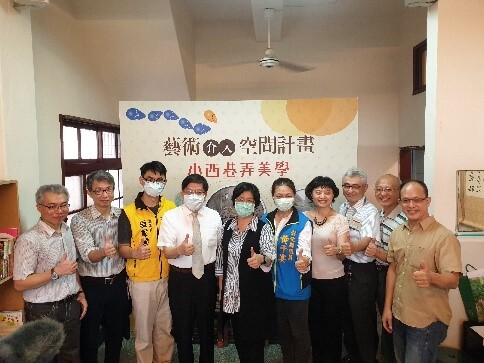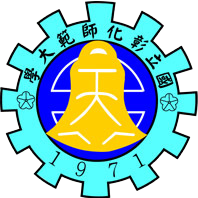SDG1.4.4 Policy addressing poverty Year: 2019 or 2020
Education is one of the best means to alleviate poverty. NCUE actively participates in local, regional, national, and even global policymaking mechanisms to end poverty everywhere in all its forms. We hope to eradicate poverty through education, including such diverse projects and policies as the measures described below:
1. NCUE integrates its relevant resources and formulates policies at all levels.
Through the Special Education Centre, the Department of Fine Arts, the Graduate Institute of History, and the Graduate Institute of Taiwanese Literature, NCUE actively links the resources from local communities, primary and secondary schools, vocational high schools, public interest groups, local enterprises, local governments, and Taiwan’s central government agencies. NCUE has established a cooperation platform to cooperatively develop projects and policies to eliminate all forms of poverty. It implements the projects of local communities, primary and secondary schools, vocational high schools, public interest groups, and local enterprises.
2. NCUE formulates and implements plans for poverty eradication with public interest groups, local enterprises, local governments, and Taiwan’s central government.
The Special Education Centre helps students with disabilities adapt to university life and various emotional, academic, societal, and career challenges. The Centre also helps the special education teachers and staff in Central Taiwan improve their professionalism and services by providing study groups, workshops, and consultation services and publishing special education periodicals.
The Department of Fine Arts, the Graduate Institute of History, and the Graduate Institute of Taiwanese Literature draw on public sector resources to implement projects on local culture and the preservation and revitalization of landscapes. They conduct historical walking tours that promote urban uniqueness, the beauty of Changhua’s culture, and the alley aesthetics of the old communities. The National Development Council’s local revitalization platform has created opportunities for change. This has enabled the Department of Fine Arts, the Graduate Institute of History, and the Graduate Institute of Taiwanese Literature to gather the consensus of local communities and draw talent from different regions to energize the Changhua 300 · Ancient City Rebirth Project, retain Changhua City talent, and combine its exception human and cultural resources to build a better Changhua City.
|
Responsible units |
Plan/policy |
Highlights |
|---|---|---|
|
Special Education Centre |
The Project of Recruiting and Guiding Students with Physical and Mental Disabilities by Universities and Colleges 2020 |
Provided relevant support services to NCUE students with physical and mental disabilities: • learning help: 782 people • daily life help: 216 people • help in transition to employment: 6 people • guidance and counselling: 158 people |
|
Special Education Centre |
The implementation plan of Changhua–Nantou–Yunlin Region’s Special Education Identification and Guidance 2020 (enhancing professional competency) |
26 professional competency activities: • 13 special education competency study groups • 4 thematic case studies seminars, • 2 special case handling seminars • 1 visit to distinguished enterprises • 6 workshops |
|
Special Education Centre |
Special Education Centre’s Counselling Project for Students with Disabilities 2020 |
1. The special education consulting services served 26 people. 2. Counsellors made ten visits to schools to provide counselling. 3. The Centre published four issues of Special Educators Journal and distributed them to 277 units across the country; they distributed 1,400 free copies of special education publications. |
|
University Social Responsibility Hub (USR Hub): Connecting, Sprawling, New Local History: Project to Create Art Scenes in Changhua Urban Areas |
1. Implements the Xiaoxi Alley Art Intervention Project and the Art Tourism in Nankaku Village: Alley Aesthetics Project 2. Gathers communities’ cultural resources for group activities and purposes 3. Draws on public sector resources to develop old communities’ alley aesthetics 4. Connects community cultural associations, returning youths, and neighbouring primary and secondary schools to expand opportunities for cooperation |
|
|
The Department of Fine Arts, the Graduate Institute of History, and the Graduate Institute of Taiwanese Literature |
Rebirth Project for Changhua Ancient City of 300 Years |
1. Uses the local revitalization platform promoted by the National Development Council to help the Changhua County Government promote the Changhua 300 · Ancient City Rebirth Project 2. Introduced four core concepts: revitalising religious beliefs, creating the elegant ancient city, promoting the Spirit of Huangsi, and treasuring the time of the railway 3. Proposed ten projects and installation art creations such as the ‘Citizen Plaza’ in front of the train station, marketing railway culture, the time bank volunteer application, and a feedback app system. 4. Dedicated to uniting the power of the central government, local governments, and the people to discover the uniqueness of Changhua and bring glory to the region. |



